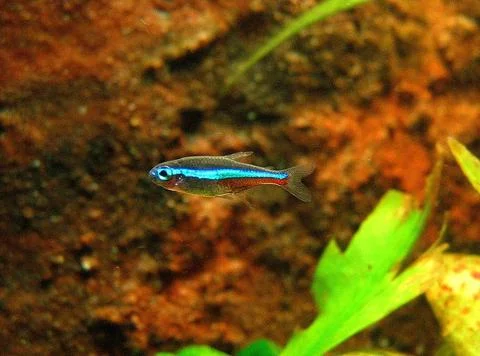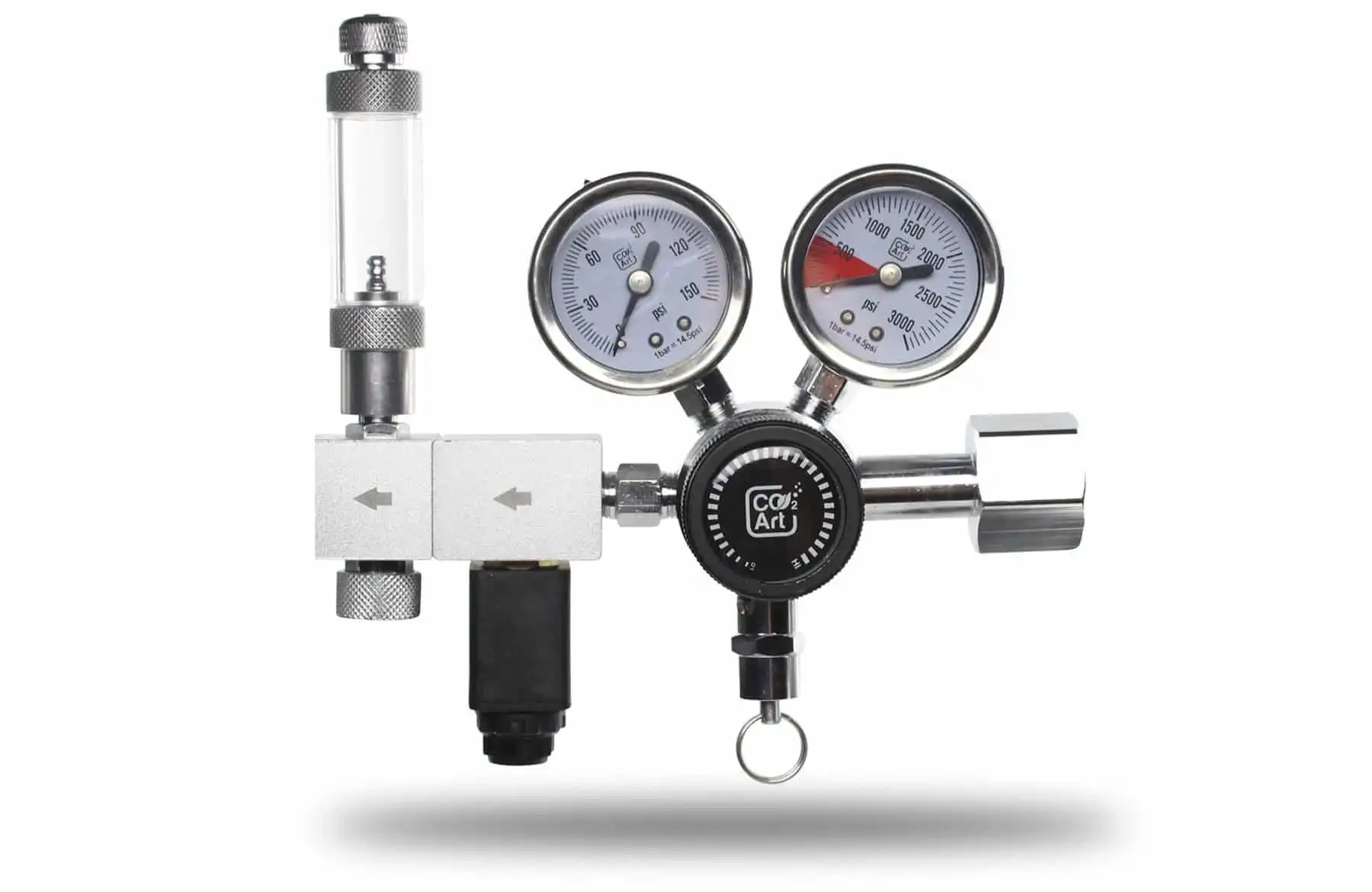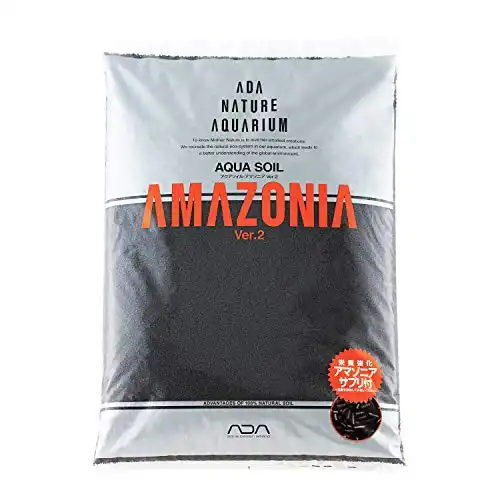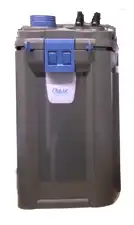Thank you for visiting! By the way… any links on this page that lead to products on Amazon and other stores/partners are affiliate links Aquarium Store Depot earns a commission if you make a purchase.
I continue our Aquascaping series with the Dutch Aquascape this week. Also known as the Dutch Style Aquarium or Dutch Style Aquascape, this style is considered one of the more pure and more maintenance intensive styles in our hobby. Its tradition dates back further than the Iwagumi Aquascape before hardscaping really became a major factor in aquascape. If you are looking for an eye popping aquascaping style that is very colorful and plant only, this is the style you are looking for.
It is a demanding aquascaping style not recommended for beginners, but he has a lot of tradition behind it. In this post, I will provide you a how to guide on success on the Dutch Aquascape, talk about the history, its concepts, and how to set one up. As a quick disclosure, this post will include affiliate links for which I may make a small commission at no extra cost to you should you make a purchase. Now let’s get started!
Key Takeaways
- Dutch aquascapes are an aquascape style that focuses on stem plants
- They require CO2 injection and heavy fertilization in order to thrive
- They are one of the most prune-heavy scapes to maintain due to the number of stem plants used
- They require more intense lighting than other scapes and shadowing is a concern due to stem plants
History
The Dutch Aquascape or Dutch Style’s roots originates all the way back to the 1930’s in the Netherlands. It is the oldest aquascaping style in our hobby. The aquascaping style originated with the creation of the Dutch Society of Aquarists or NBAT. It wasn’t until 1956 the the NBAT published the initial set of guidelines of what defined the Dutch Aquascape. They would run annual contests with these guidelines and the judges would actually visit the aquariums instead of working with submitted photos.
Concepts of the Dutch Style Aquascape
The Dutch Aquascape is based on the following principles
- No more than 1 plant species per 4 inches of tank length
- No duplication of the same species in another group
- A shoal of fish should be issued with at least 12 fish from the same species
The rules of the Dutch aquascaping style is very restrictive. Many of the dutch aquascapes you see these days are actually Dutch hybrids with just variations of the rules above. The general rule is to keep about 70% of the aquarium floor planted.
Layout

A Dutch Aquascape is all about the plants. There is no hardscaping to do with this style as we are going to use the plants to setup our landscape. The main thing with this style is obtaining a taller tank as you will be using certain plants that do get tall and you want to allow them time to grow and show their length before pruning. We want to aim for at least 18-24 inches in height for a Dutch scape. Dutch scapes also tend to be a bit wider usually in the 3 to 4 feet range. The 40 gallon breeder tank is a great consideration to use. If you want a serious competition like tank setup, consider a rimless tank.
A Dutch style aquascape does follow the rule of two thirds concept like the Iwagumi, but it’s a bit trickier to pull off. It’s really about impact with this style. The main technique you need to know with Dutch style is terracing and spacing. You will want to place the biggest and brightest plants at your focus points. You can also choose to not follow the rule and then have the option of 4 focal points.
Terracing
Terracing is used with Dutch Style aquariums to convey depth in the aquarium. This is also to create focal points in the aquascape.
Terracing traditionally in agriculture would be creating mounds of soil to create raised sections in the landscape. With the Dutch style or aquascape we position the substrate in a way where we slope it. We start almost flat at the bottom and increase the depth of the substrate as we go from the front of the tank to the back. This is the way this aquascaping style is done in modern times because it allows us to be more flexible with our setup.
Another way of doing is by keeping plant groups on different heights. Space is key as well. We want to space groups of plants at least a half inch between groups of plants. This gives the plants breathing room and room for growth. They will also expand to their best appearance and make pruning a bit easier to do. Spacing to spread out density is also known as streeting in the Dutch Style. Streets are spaces between your plant groups that help create depth and perspective in your aquascape.
Plant Selection
Plants are everything with the Dutch Aquascape. They are your feature pieces. We have to select a variety of plants to have an eye popping aquascape. This means we have to look at shapes, texturs, and colors with our plants. We also need to plant in an order to contrasts our plant mix so our piece does not end up looking dull or overdone. Most of our plants will also be stem plants, meaning they will feed on the nutrients in our substrate. Let’s breaking down our plant selection to the following:
Short plants
- Alternanthera reineckii
- Hygrophila Araguaia
- Eriocaulon species plants
Mid-Size Stem Plants
- Bacopa species plants
- Ludwigia species plants
- Rotala Macrandra
Taller Colored Stem Plants
- Ludwigia pantanal or cuba
- Pogostemon stellatus
- Limnophila hippuroides
There is actually a great stem plant pack available online that will get you some great plants to start with. Check out the link below!
This starter pack includes popular dutch style plants like Ludwigia Natans, Bacopa Monnieri. A great way to start out!
More About Stem Plants in Tanks
When discussing Dutch Aquascapes, we need to drive into stem plants a bit more. The dutch style will use the most stem plants of any aquascape style. Stem plants growth patterns are vertical with branches. Many will grow tall and will keep growing in the aquarium until they reach the top of your tank.
Because of this, they require the most management of any plants in our hobby. It is not uncommon for these plants to require weekly pruning. If left unchecked, it is very possible that these plants will cover the top of your aquarium and will end up shadowing your entire aquarium. You can see an example from Tropictank YouTube Channel of an overgrown Dutch aquascape that badly needs to be pruned:

Stem plants will also require strong Aquarium Lighting and Aquarium Injected CO2 Systems to grow their best and to display their best colors. Shadowing is a concern with Dutch style tanks.
The good thing with stem plants is they can be easily propagated by cutting off nodes and simply replanting them. This can make a fully planted Dutch Aquascape more fun as you can trade with friends or trade your plants to your aquarium store for credit to help fund your hobby.
Tension vs. Harmony
We talked about this earlier on the Iwagumi style. We know to create visual interest and energy that we need to balance tension and harmony.
So what is tension in a dutch aquascape? This is going to do with the leaf shape ,structure of our plants, shape, and color. Plants with more textured leaves and sharper leaves versus round will create tension. Plants that grow tall versus round will create more tension.
Color is really what stands out from other aquascape styles with the Dutch style. Let’s discuss how this works. In color theory, we have what we call warm and cool colors. Warm colors have the following emotions tied to them: happy, excitement, bright, and angry. They have shorter wavelengths on the light spectrum which makes them feel energetic to us

Cool colors have the following emotions tied to them: Calm, soothing, relaxing, and harmony. They have longer wavelengths on the light spectrum which makes them feel more calm then warm colors.

Contrasting warm and cool colors creates are our tension in our aquascape. We have many things to work with on balancing our tension and harmony balance. Color is just going to be the most obvious, which is why I am touching on it. If you want to learn more about color theory here is a video below from Purple Pretty Door for your enjoyment.
Your goal as the aquascaper is to create that blend of balance with your tension and your harmony. Too much tension and the viewers eye will be over the place. Too much harmony and your aquascape will look boring and too uniform. Research your plant selection careful and draw out a plan for where you are going to plant everything and what plants you are going to use.
Obtaining Your Plants (Tissue Culture vs. Aquacultured)
We discussed it earlier in our Iwagumi Aquascape post. Always lean on tissue culture stem plants. You have less risk with pests and nuisance algae going this route versus purchasing aquascultured plants. They are good value for the money and lab grown.
As with the Iwagumi, you will want to purchase all your live plants at once. You will want to plant densely to start, you will want to plant densely to start.
Setting Up for This Style
Because of the type of plants will be using for a Dutch Aquarium, we cannot utilize the dry start method. We will need to densely plant and flood our tanks when we start up.
This aquascaping style is one type of scape you will not be able to dry scape. It requires more research on the plants and their grow patterns then other styles because of it. Take time to learn your plant’s grow patters so you know where to put your plants to create a proper foreground, background, and middle section of the tank. Use the tension and harmony discussion below to balance your visual impact and create your focal points.
Revisit the discussion about Dutch Style Terracing so you can create proper depth, focal points, and grouping for your plants. For an example Aquascape setup. See the video below by Yulia below:
Lighting
Dutch Aquascapes will use the most light intensive plants in our hobby. We not only want to select a light that encourages a lot of growth, but we have to keep in mind coverage. Coverage and spread is a major and critical consideration in our light selection. Because we are using stem plants that will go large and spread through our tank, we will have an issue with shadowing as plants grow. If you know about LEDs weakness, you will be familiar with shadowing issues with them.
For example with hobbyists with SPS coral tanks, shadowing is a major issue as corals grow. Such will be the case with a Dutch Style aquarium.
Because of this, a T5 fixture is going to be the best choice for our dutch aquascape. T5s strength is from its spread and uniformity. A cheap route that works for our Dutch Style setup is an Odyssea T5 Quad Fixture or Hydrofarm T5s.
Oldschool T5s are still the very best in spread and spectrum. Ideal for dutch aquascapes
Bulb selection is very important with T5 setups. For bulbs I would recommend Giesemann bulbs. 2 x Giesemann Super Flora and 2x Giesemann Topic T5s will create a combo of spectrum and proper color tones.
CO2 Systems
The Dutch Style will have some of the most demanding plants in our hobby. They will require CO2 supplementation in order to display their best colors and shape. Without CO2, our Dutch Style attempt will simply fail. There is no way around it with a Dutch Style tank, they are simply a high tech planted tank at their core.
These hungry plants will want a proper CO2 regulator, CO2 bubble diffusor, and an appropriate sized CO2 canister. Check out our Best CO2 Systems Reviews for insights on CO2 systems and why CO2 is so essential for your success.
Best CO2 Regulator
Professional level CO2 Regulator for top level aquascapers and reef tank owners. Backed by a 10 year warranty
Aquarium Substrates
Because we are going to be planting stem plants that will feed on the soil of our aquarium, an active substrate is a must. We want to have an active substrate that can hold lots of nutrients to help our plants grow to their best potential.
In our Best Planted Tank Substrates blog post, we talked about how ADA Aquasoil is the name in the game when it comes to planted tank substrates. This is the go to soil for planted that require heavy feed. It is a substrate that will allow for regular replanting.
The Best Planted Tank Substrate
The world's standard in active substrates for planted tanks. Created by brand that founded modern aquascaping
Fertilization
The ADA Aquasoil is going to give us an excellent start with our Dutch Aquascape and will provide a soil for our plants to feed off of. However, a Dutch style is an aquarium that will require a heavy amount of feeding to the plants so we will be using so may of them. Red plants also make this more complex as they have higher demands than most green plants. Plants in your Dutch Aquascape will grow fast, demand food, want great lighting, and require a lot of CO2 supplementation.
The good thing is that APT Complete is actually designed for Dutch Style aquariums. It was designed by a hobbyist who grows Dutch Style tanks. This is the main supplement you will want to use for your dutch style tank. You can use the full dosage recommended on the bottle and adjust from there.
APT Complete is a all in one fertilizer that is designed for heavily planted, heavy demand aquariums. To learn more about fertilizers, see the Best Aquarium Plant Fertilizers blog post for details on macro and micro nutrients.
Editor's Choice
Made by an aquascaper for aquascapers. This is the best all around aquarium plant fertilizer on the market. Marco and micronutrients in one bottle!
Use Coupon Code ASDComplete for 10% off your order!
Fish For These Aquariums
Like the Iwagumi tank, fish are not center point in a Dutch Aquascape. Our focus is on the plants and creating a work of art. The fish compliments our piece, not take it over. Due to this, we are again look at schooling fish like Tetras, especially a Neon Tetra. What I like about Neon Tetras is that they contain the blue we are lacking in our plants. As you may recall, blue is a cool color that unfortunately we are not able to obtain through our plan selection.
Neons offer a perfect opportunity to obtain that rare blue that is available in our aquascape. Not only that, they move in our aquarium so they will work within your aquarium to contrast your tank. It really comes with my highest recommendations when it comes to creating a eye popping Dutch Aquascape.

There are also people who will use Angelfish or even Discus in Dutch Aquascapes. These can work, but the size of the fish can really take away from your aquascape. The decision; however, is all up to you.
Filtration
Dutch Aquascape setups are even more high demanding than the Iwagumi style. It’s one of the most intensive planted aquariums you can keep. A top of the line filtration unit should be considered.
As such, I’m going to recommend the Biomaster Thermos Series of Canister Filters. It’s a complete, durable unit with an aquarium heater built into it. It is the go to now for high tech planted tanks in today’s age.
The Pro's Choice
The top choice among professional aquascapers. German engineering and equipped with an intregrated heater.
How To Set Up This Style
So we have talked about the history and concepts of the Dutch Aquascape, plant selection and color theory, the best plants, how to setup up the tank, and the fish. Now let’s bring it all together build a setup. Let’s create our shopping list.
- Tank – Landen Rimless 32G Tank (23.6″ L, 17.7″ W, 17.7H”
- Lighting – Odyssa Quad T5 Fixture
- Canister Filter – Biomaster Thermo Canister Filter
- Substrate – ADA Aquasoil
- Lily Pipe Return
- Surface Skimmer
- CO2 Drop Checker
- CO2 Bubble Diffuser
- CO2 regulator with bubble counter
- Liquid fertilizer – APT Complete
Pruning Issues
The major issue with Dutch Aquascapes is pruning. There is so much pruning that needs to be done with your tanks as the plants grow fast and you need to main shapes so your streets look clean and your tank is presentable. One such saying I have heard over the years is someone saying that the only time their Dutch Aquascape looked good was the first day after a pruning. They really do require a lot of upkeep just like any well groom landscape garden. Be prepared to purchase Pruning Aquascape Tools. The video below by Tropictank YouTube Channel illustrates what happens if you let your aquascape go too long without a pruning!
Closing Thoughts
The Dutch Aquascape is a classic aquascape style for freshwater planted tanks. It is one of the most challenging setups you can work with, and also one of the most rewarding. It’s a purely planted tank at its core. You can really flex your planting muscles with this style of aquascape. The Dutch Style reminds me of flower gardens in your home. If you have any comments, please leave them in the comments section. Thank you for reading!
- About the Author
- Latest Posts
I’m thrilled that you found Aquarium Store Depot! Here you’ll find information on fish, aquariums, and all things aquatics related. I’m a hobbyist (being doing this since I was 11) and here to help other hobbyists thrive with their aquariums! I adhere to a high quality Editorial Process and Review products with real life field usage and practical analysis.












Excellent but can you please let me know the names of plants especially the red plants
What is the best size tank for dutch style
20 gallons is the minimum, but 4-foot aquariums are the best for show-style tanks. I would say 2 or 4 feet tanks are best for dimensions.